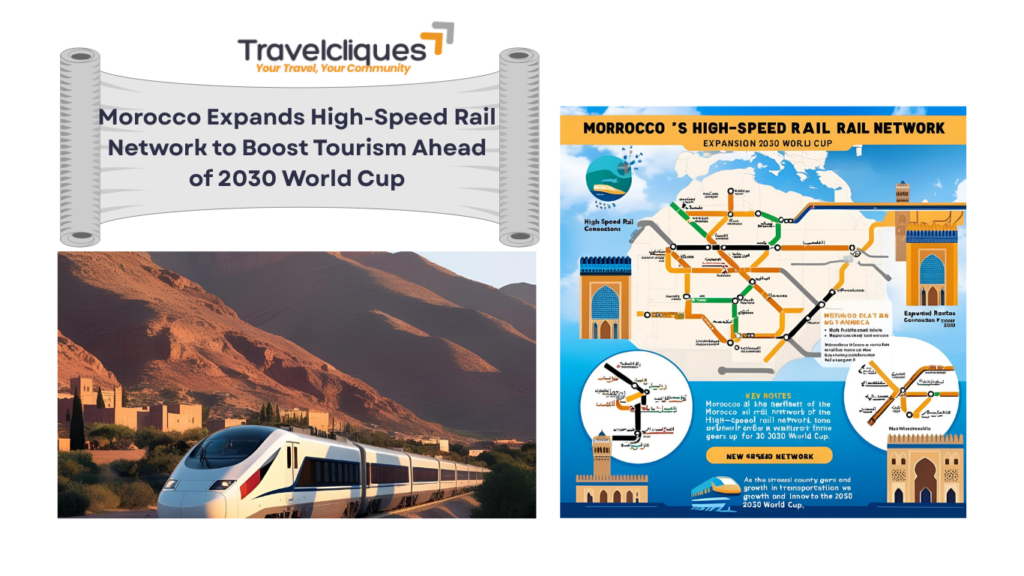Morocco Expands High-Speed Rail Network to Boost Tourism Ahead of 2030 World Cup
Morocco Expands High-Speed Rail Network to Boost Tourism Ahead of 2030 World Cup

Morocco is embarking on a transformative journey to revolutionize its transportation landscape with a $10 billion investment in expanding its high-speed rail network. This ambitious project aims to connect key cities, reduce travel times, and bolster tourism, positioning the country as a premier destination ahead of the 2030 FIFA World Cup, which it will co-host with Spain and Portugal.
Project Overview: Connecting Morocco’s Major Cities
The centerpiece of this expansion is the construction of a 430-kilometer high-speed rail line linking Kenitra to Marrakech. This line will traverse major urban centers, including Rabat and Casablanca, significantly reducing travel times:travelnews.africa+4Reuters+4Trendsnafrica | 24/7 Africa News+4Trendsnafrica | 24/7 Africa News+4Homepage+4Reuters+4
-
Tangier to Marrakech: 2 hours and 40 minutes
-
Tangier to Casablanca: 1 hour and 40 minutes
-
Rabat to Casablanca’s Mohammed V International Airport: 35 minutesWikipediaCondé Nast Traveler+3Reuters+3Wikipedia+3

This development is poised to become the longest high-speed rail line in Africa, enhancing connectivity and accessibility across the nation. Trendsnafrica | 24/7 Africa News
Economic and Tourism Impacts
In 2024, Morocco welcomed approximately 17 million tourists, reflecting a robust recovery in its tourism sector. The enhanced rail network is expected to further stimulate tourism by providing efficient and sustainable travel options between cultural and historical landmarks.
The project is also anticipated to create numerous job opportunities and stimulate economic growth in connected regions, contributing to Morocco’s broader development goals.
Strategic Importance: Preparing for the 2030 FIFA World Cup
As Morocco prepares to co-host the 2030 FIFA World Cup, the high-speed rail expansion is a critical component of its infrastructure strategy. The improved transportation network will facilitate the movement of fans and tourists between host cities and venues, ensuring a seamless experience during the global event.
Sustainability and Future Outlook
The high-speed rail project aligns with Morocco’s commitment to sustainable development. By promoting low-carbon transportation alternatives, the country aims to reduce its environmental footprint while accommodating increasing travel demand.
Looking ahead, Morocco plans to extend its high-speed rail network further, aiming to serve 43 cities and reach 87% of the population by 2040.: https://travelcliquesltd.com/Pages/News.html
Conclusion
Morocco’s high-speed rail expansion represents a significant leap forward in enhancing national connectivity, stimulating tourism, and preparing for major international events like the 2030 FIFA World Cup. This strategic investment underscores the country’s vision for sustainable growth and its commitment to becoming a leading destination on the global stage.
Read more travel news on: https://thetravelcliques.com/